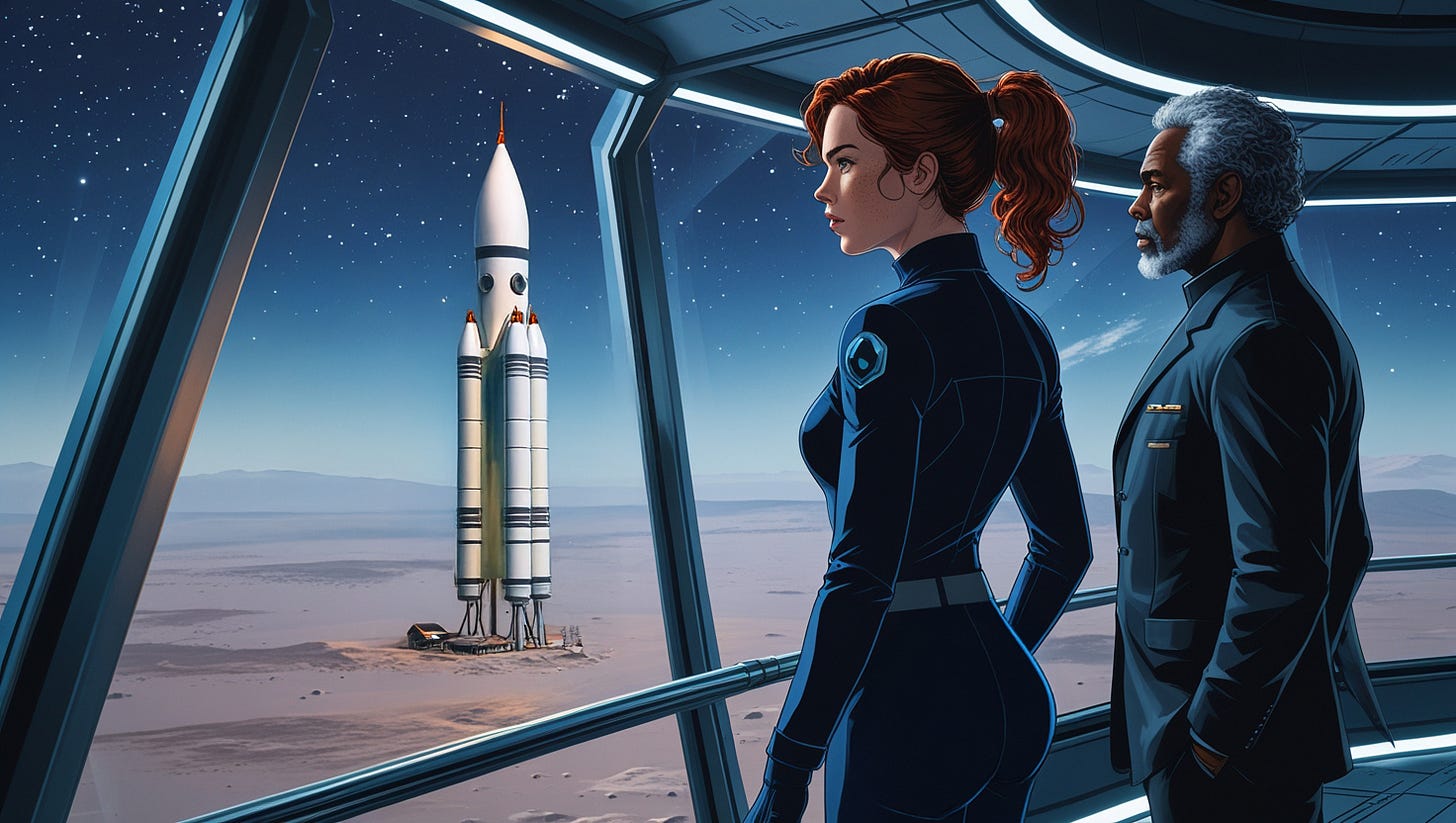Circa 2200
Lyla Donovan had spent her entire life waiting for a moment like this. Now that it had finally come, she felt nothing but anxiety. The observation deck of Luna Station Alpha offered an unobstructed view of the Moon’s surface, a barren and silent expanse beneath the cold glow of distant stars. In the distance, a launch pad shone under bright floodlights, the Phoenix I probe standing tall and ready for its launch. It was the first of its kind—an unmanned, AI-driven reconnaissance probe designed to validate what she had discovered two years ago. Tarnah. The exoplanet that had sent shockwaves through human civilization. The New Earth. The promised land. Yet, despite the excitement, something troubled her. “Still having doubts?” Dr. Edward Dempsey’s voice broke through her thoughts. The UEC’s Chief Scientist stood next to her, his expression inscrutable. His presence served as a reminder that this mission, like everything else, had become political. “I’m not questioning the mission,” she replied. “I’m questioning what comes next.” Dempsey let out a weary sigh. “We launch the probes, we collect data, and if Tarnah is what we hope it to be, we proceed.” Lyla turned to him, “And if it’s not?”. Dempsey let out a final sigh, “…Then we reevaluate.” She wanted to trust that. But after two years of political maneuvering, with religious factions claiming Tarnah as a divine right, and militaristic whispers about ‘securing humanity’s future’—she wasn’t convinced that reevaluation was a viable option.
Phase One: The Phoenix Probes Begin Their Journey
The Phoenix Initiative was designed as a careful first step. Over the next two years, five probes would be dispatched to Alpha Centauri, utilizing next-generation ion propulsion drives powered by Ezrythium reactors. Unlike previous interstellar missions that would take centuries, the Phoenix probes were set to arrive in just under four years—a remarkable feat of human engineering. Each probe was outfitted with AI-driven diagnostic tools, atmospheric samplers, and high-resolution scanners. Their mission was straightforward: confirm habitability, assess potential threats, and relay as much information as possible before humanity decided on a crewed mission.
The first probe, Phoenix I, launched in early 2200. In the months that followed, Phoenix II and Phoenix III were sent out, ensuring redundancy in the mission. By mid-2201, the entire fleet was on its way, with each relay transmission providing vital data about the interstellar journey itself. For Lyla, those years were a whirlwind of monitoring progress and attempting to keep the UEC from rushing ahead. Every new scan reaffirmed what she already understood: Tarnah was extraordinary. The atmospheric readings were stable, water was abundant, and the surface gravity was nearly identical to that of Earth. But then, the signals began to vanish.
Phase Two: Silence from the Stars
It all started with Phoenix III.
In the closing months of 2202, its signals became erratic—data packets arrived corrupted, filled with static and indecipherable code. Then, without any warning, the probe went silent. Lyla was in the UEC command center when it happened. The tracking monitors, once alive with lines of code and telemetry, flatlined. No alerts. No distress signals. One moment, Phoenix III was operating normally. The next, it was simply gone.
“Could be a systems failure,” one of the engineers suggested.
“Or something else,” Lyla replied quietly.
Keep reading with a 7-day free trial
Subscribe to Dendrahlis: Tales from the Multiverse to keep reading this post and get 7 days of free access to the full post archives.



